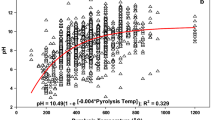Abstract
Indonesian coconut sugar (n = 109 samples) from different local producers was analyzed over a 2-year period. A mean δ13C value of − 25.6‰ ± 0.4‰ was determined for unadulterated (pure) coconut sugar. Seasonal climatic differences of up to ± 0.4‰ increase the standard deviations of coconut sugar (− 25.6‰ ± 0.8‰). Up to 5% w/v of cane sugar is often added during production for seeding purposes which could increase the final coconut sugar δ13C values by up to 0.7‰. Excess C4 sugar (cane or corn sugar) was suggested in 31 coconut sugar samples due to more positive δ13C values (> − 24.8‰). More negative coconut sugar δ13C values (< − 26.4‰) may indicate additives, such as mangosteen sap, commonly used to prevent fermentation of the sugar syrup. A maximum acceptable δ13C value of − 24.1‰ for coconut sugar is proposed which cumulatively accounts for climatic variability and accepted industry seeding practices.


Similar content being viewed by others
References
AOAC method 991.41, C-4 Plant sugars in Honey. Internal standard stable carbon isotope ratio method. First action 1998
AOAC method 998.12: C-4 plant sugars in honey, in: P. Cunniff (ed), Official Methods of Analysis of AOAC International, 16th AOAC International, Gaithersburg, MD, USA, 1999, Vol. 2, pp 27–30
AOAC method 2004.01 Carbon stable isotope ratio of ethanol derived from fruit juices and maple syrups, in: AOAC International, Gaithersburg, USA
Banerjee S, Kyser TK, Vuletich A, Leduc E (2015) Elemental and stable isotopic study of sweeteners and edible oils: constraints on food authentication. J Food Compos Anal 42:98–116
Bowling DR, Ballantyne AP, Miller JB, Burns SP, Conway TJ, Menzer O, Stephens BB, Vaughn BH (2014) Ecological processes dominate the 13C land disequilibrium in a Rocky Mountain subalpine forest. Glob Biogeochem Cycles 28:352–370. https://doi.org/10.1002/2013GB004686
Burns AE, Gleadow RM, Zacarias AM, Cuambe CE, Miller RE, Cavagnaro TR (2012) Variations in the chemical composition of cassava (Manihot esculenta Crantz) leaves and roots as affected by genotypic and environmental variation. J Agric Food Chem 60:4946–4956
Chartrand MMG, Mester Z (2019) Carbon isotope measurements of foods containing sugar: a survey. Food Chem 300:125106
Coplen TB, Brand WA, Gehre M, Gröning M, Meijer HAJ, Toman B, Verkouteren RM (2006) New guidelines for δ13C measurements. Anal Chem 78:2439–2441
Doner LW, White JW (1977) Carbon-13/Carbon-12 Ratio is relatively uniform among honeys. Science 197:891–892
ENV12140 (n.d.) Fruit and vegetable juices—determination of the stable carbon isotope ratio (13C/12C) of sugars from fruits juices—method using isotope ratio mass spectrometry. European Committee for Standardization, Brussels, Belgium
Farquhar GD, Ehleringer JR, Hubick KT (1989) Carbon isotope discrimination and photosynthesis. Annu Rev Plant Physiol Plant Mol Biol 40:503–537
Figueira R, Venturini Filho WG, Ducatti C (2013) Carbon isotope analysis in apple nectar beverages. Food Sci Technol 33:32–37
Imaizumi VM, Sartori MMP, Ducatti C, Venturini Filho WG (2019) Use of stable isotopes of to detect coconut water adulteration. Sci Agric 76:261–265
Ishida-Fujii K, Goto S, Uemura R, Yamada K, Sato M, Yoshida N (2005) Botanical and geographical origin identification of industrial ethanol by stable isotope analyses of C, H, and O. Biosci Biotechnol Biochem 69:2193–2199
Jahren AH, Saudek C, Yeung EH, Linda Kao WH, Kraft RA, Caballero B (2006) An isotopic method for quantifying sweeteners derived from corn and sugar cane. Am J Clin Nutr 84:1380–1384
Kelly S (2009) Identification of an internal isotopic reference compound in palm sugar to improve the detection of cane sugar addition. UK Food Standards Agency Q01117:7
Lees, M. (2017) Stable Isotope Ratio Analysis provides the methods of choice for food authentication. Online presentation, http://isofood.eu/wp-content/uploads/2017/02/06_Miche%CC%80le-Lees.pdf. Last accessed 26/12/2020
O’Leary M (1988) Carbon isotopes in photosynthesis. Bioscience 38:328–336
Picarro Application Note (AN037) 2017. Detection of coconut water adulteration with CM-CRDS. https://www.picarro.com/support/library/documents/an037_detection_of_coconut_water_adulteration_with_cm_crds_application (Last accessed 12 March 2020)
Psomiadis D, Zisi N, Koger C, Horvath B, Bodiselitsch B (2018) Sugar-specific carbon isotope ratio analysis of coconut waters for authentication purposes. J Food Sci Technol 55:2994–3000
Rossmann A, Koziet J, Martin GJ, Dennis MJ (1997) Determination of the carbon-13 content of sugars and pulp from fruit juices by isotope-ratio mass spectrometry (internal reference method). A European interlaboratory comparison. Anal Chim Acta 340:21–29
Rossmann A (2001) Determination of stable isotope ratios in food analysis. Food Rev Int 17:347–381
Sercon Application Note 003. Detecting the addition of cane sugar to authentic palm sugar using δ13C analysis of an internal isotopic standard. https://sercon-instruments.com/wp-content/uploads/2017/04/003-adulteration-of-palm-sugar.pdf (Last accessed on 12 March 2020)
Tremblay P, Paquin R (2007) Improved detection of sugar addition to maple syrup using malic acid as internal standard and in 13C isotope ratio mass spectrometry (IRMS). J Agric Food Chem 55:197–203
White JW, Winters K (1989) Honey protein as internal standard for stable carbon isotope ratio detection of adulteration of honey. J Assoc Anal Chem 72:907–911
Acknowledgements
Grateful thanks are due to Dr. Landis W. Doner for helpful comments and insights for the manuscript.
Author information
Authors and Affiliations
Contributions
Karyne Rogers: conceptualization, data visualization and writing; Andy Phillips: quality control, sample analysis, supervision and review; Joan Fitzgerald: sample analysis and review; Pam Rogers: sample analysis; Chris Ferguson: sample analysis and review; Jannine Cooper: data curation, sample analysis and review; Yuwei Yuan: review.
Corresponding authors
Ethics declarations
Conflict of Interest
The authors declare that they have no conflict of interest.
Ethical Statement
The authors declare this research was not undertaken using human participants and/or animals, so informed consent is not applicable.
Additional information
Publisher’s Note
Springer Nature remains neutral with regard to jurisdictional claims in published maps and institutional affiliations.
Rights and permissions
About this article
Cite this article
Rogers, K.M., Phillips, A., Fitzgerald, J. et al. Authentication of Indonesian Coconut Sugar Using Stable Carbon Isotopes. Food Anal. Methods 14, 1250–1255 (2021). https://doi.org/10.1007/s12161-021-01967-9
Received:
Accepted:
Published:
Issue Date:
DOI: https://doi.org/10.1007/s12161-021-01967-9




